EXTREMELY RARE! WWII "SECRET" May 30th, 1945 "Great Yokohama Air Raid" B-29 & P-51 Raid Commander of Amphibious Group Five Admiral Jerauld Wright Combat Intelligence Report (1 Page)
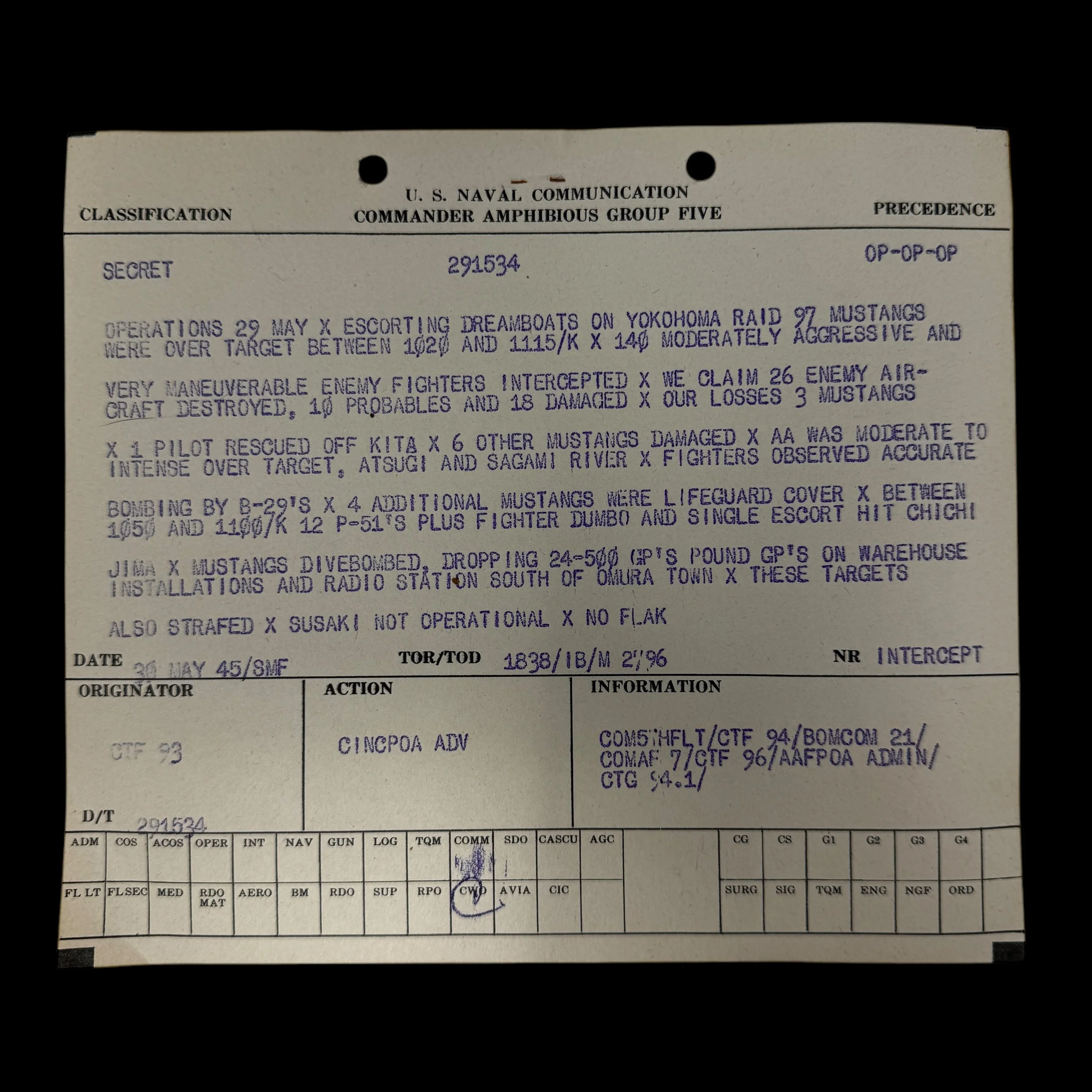
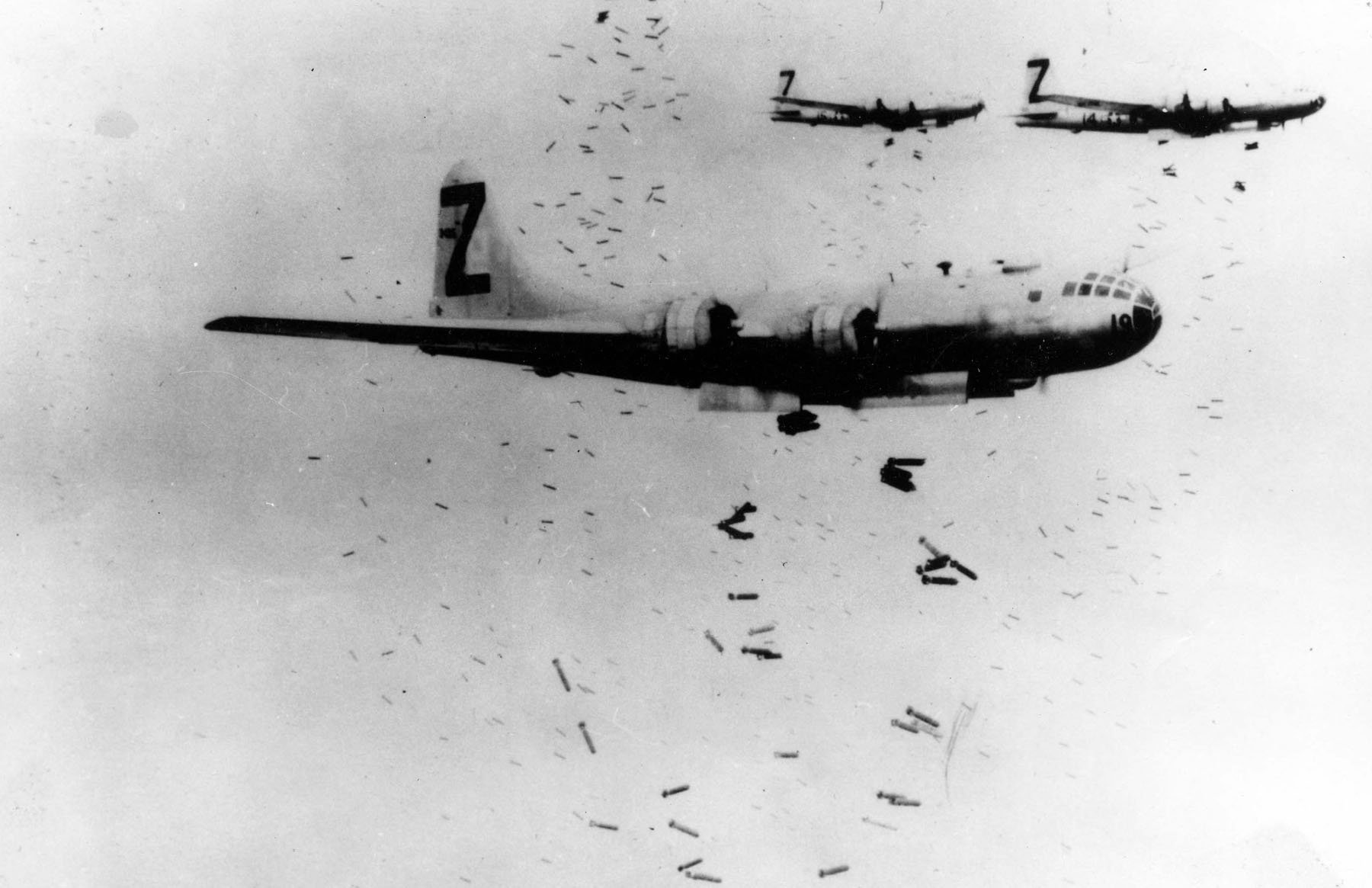
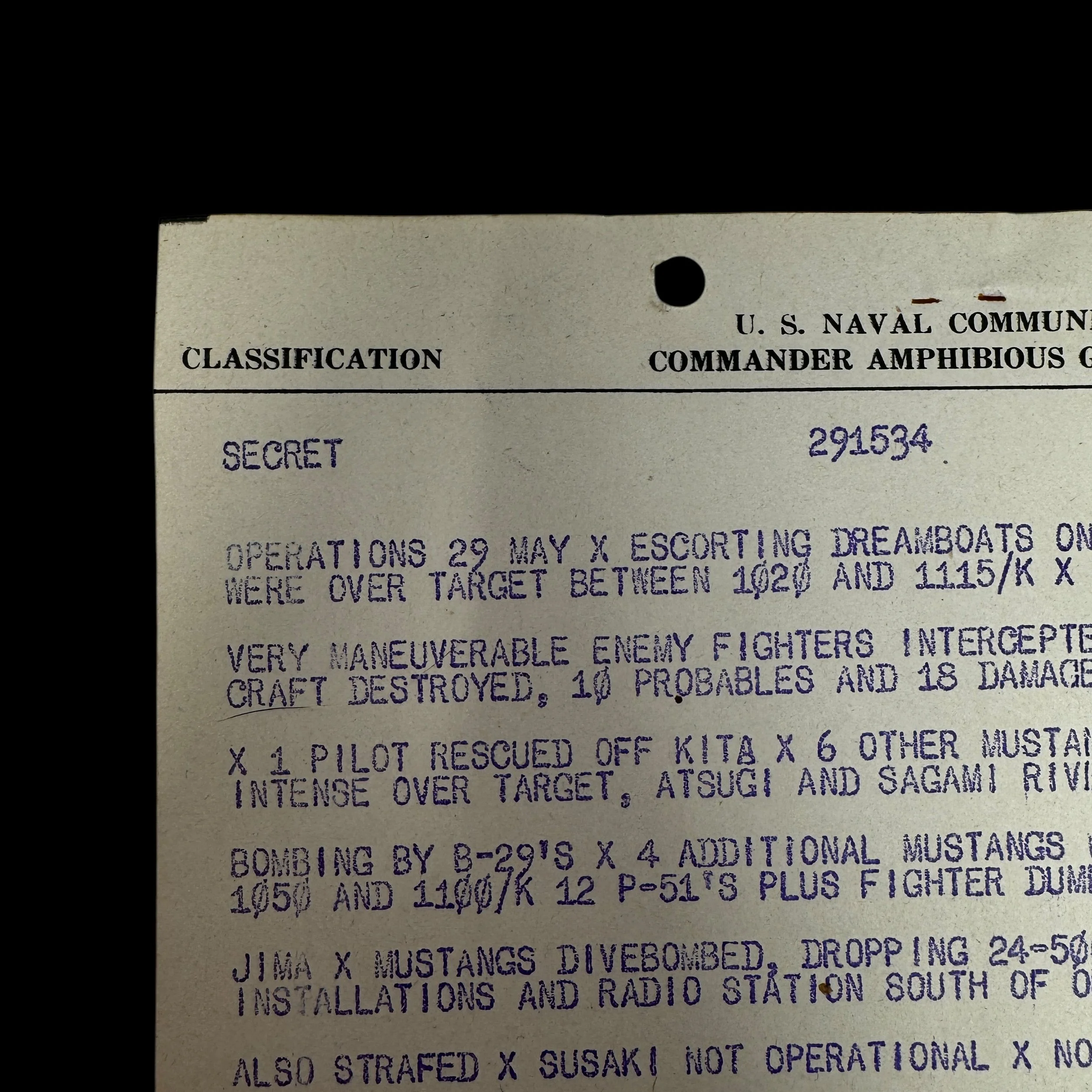
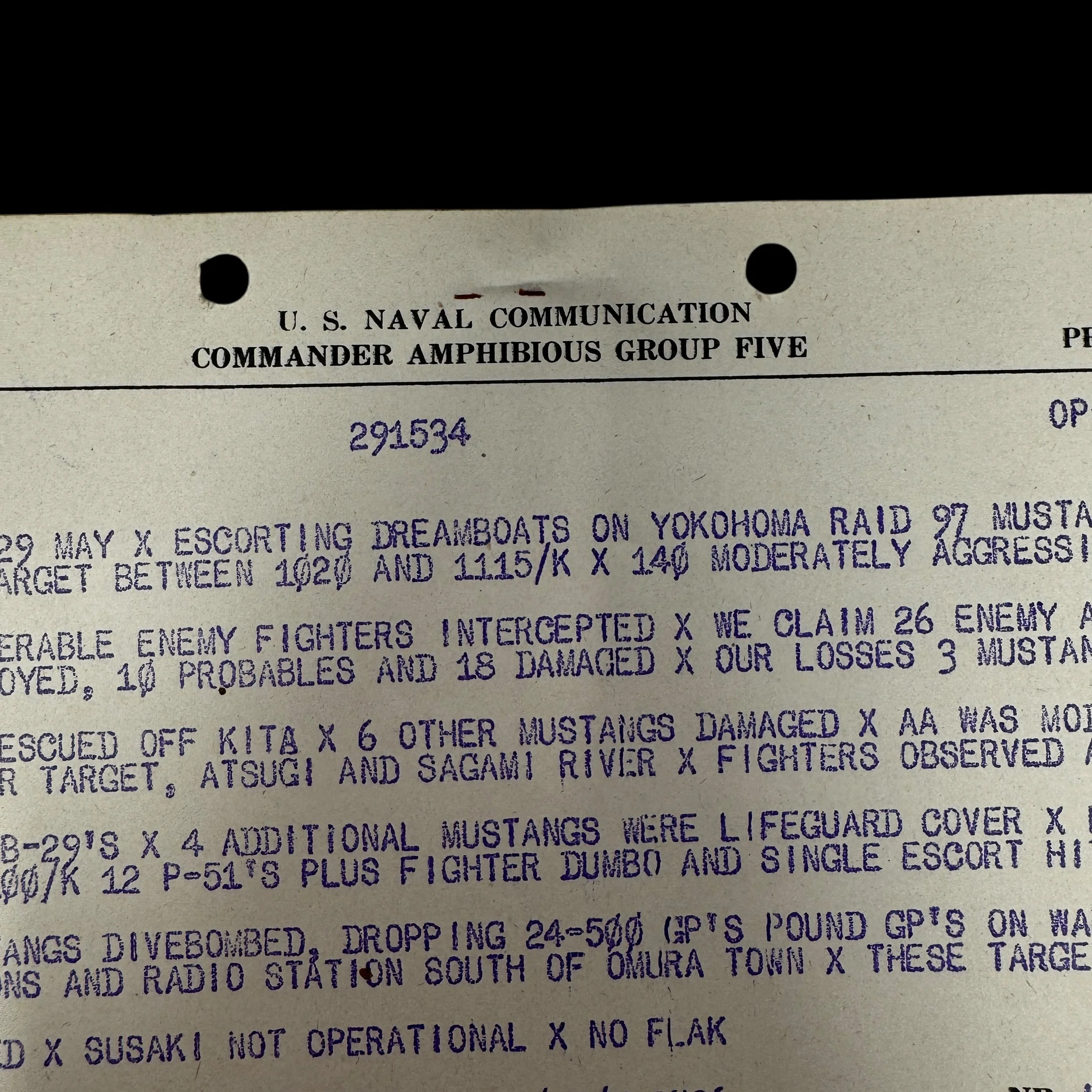
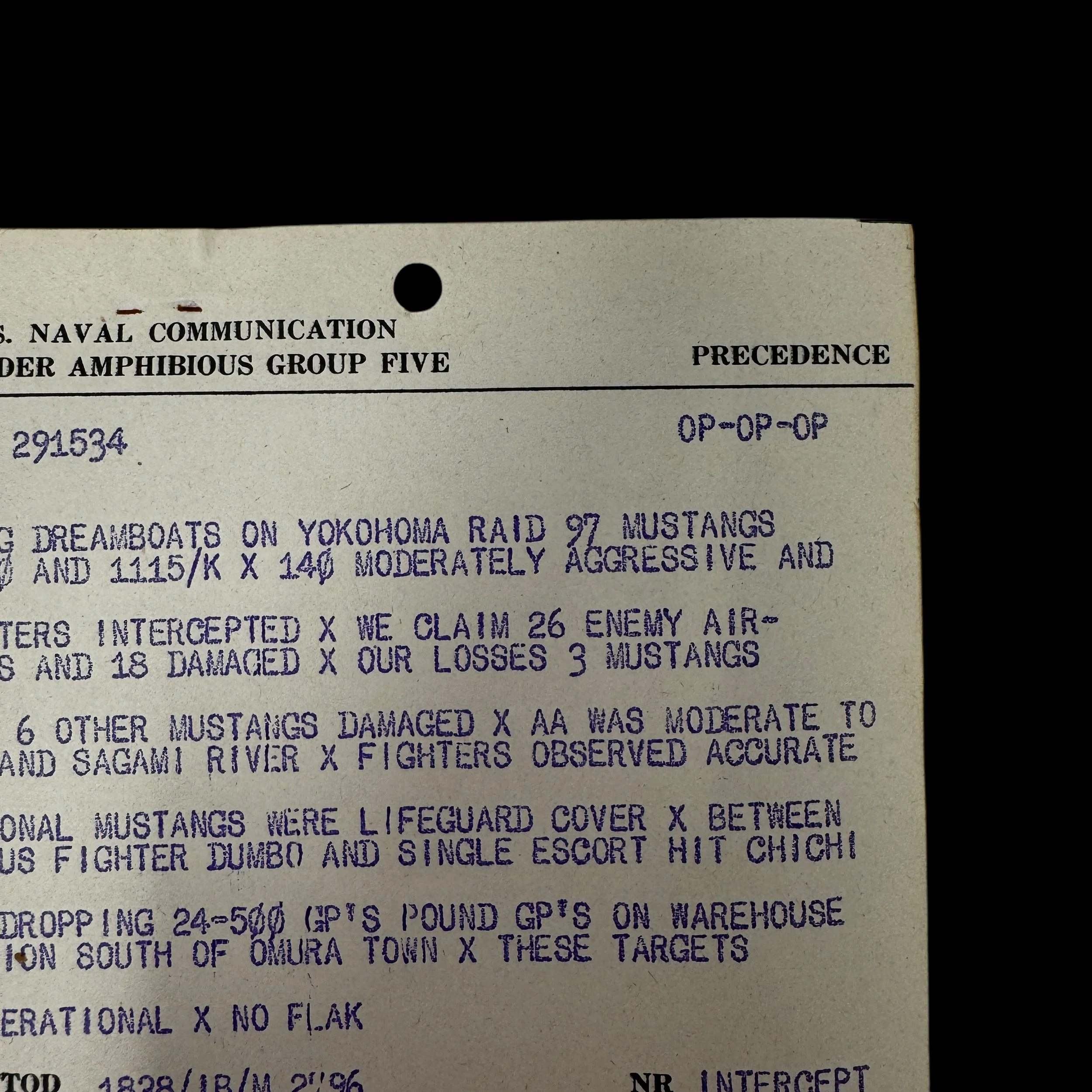
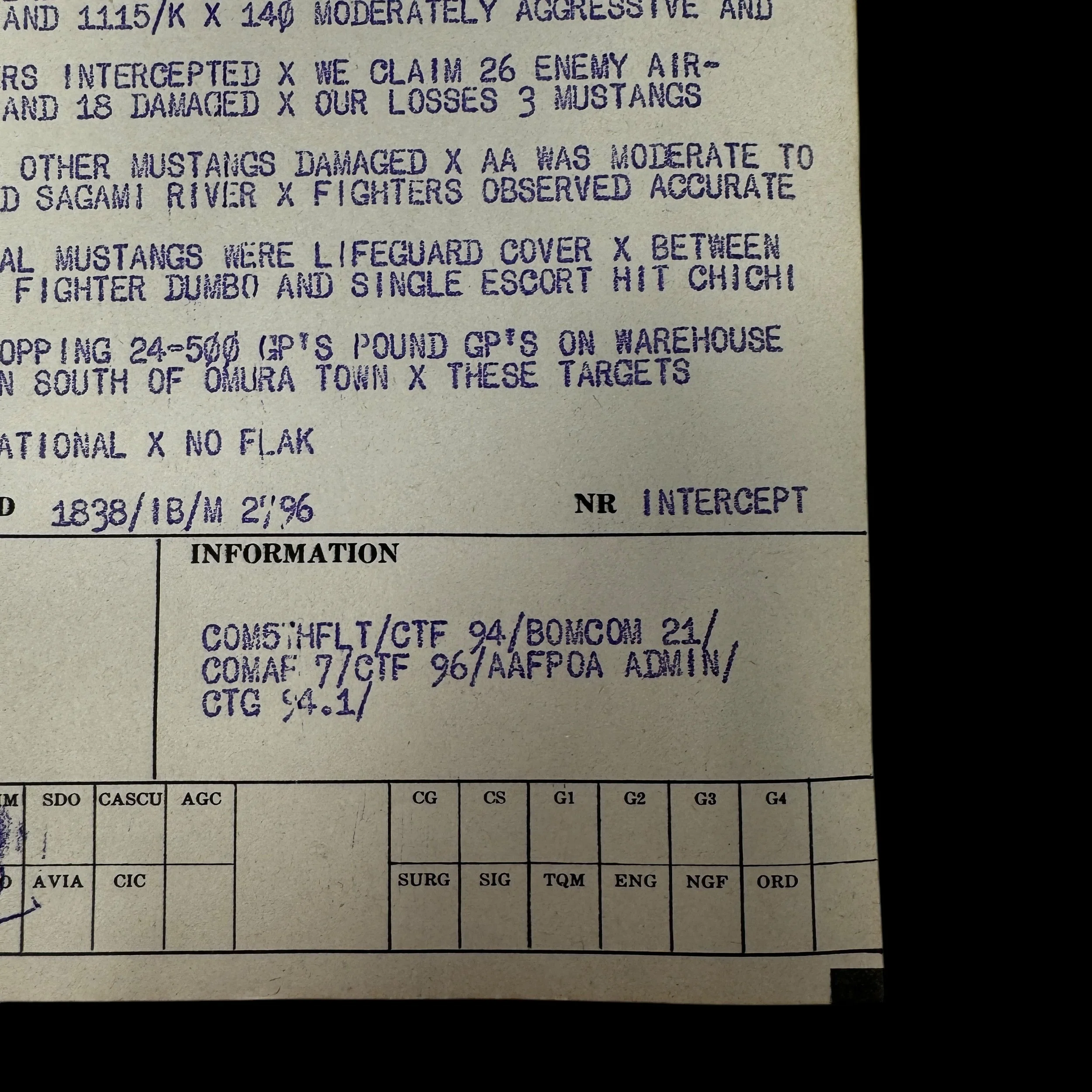

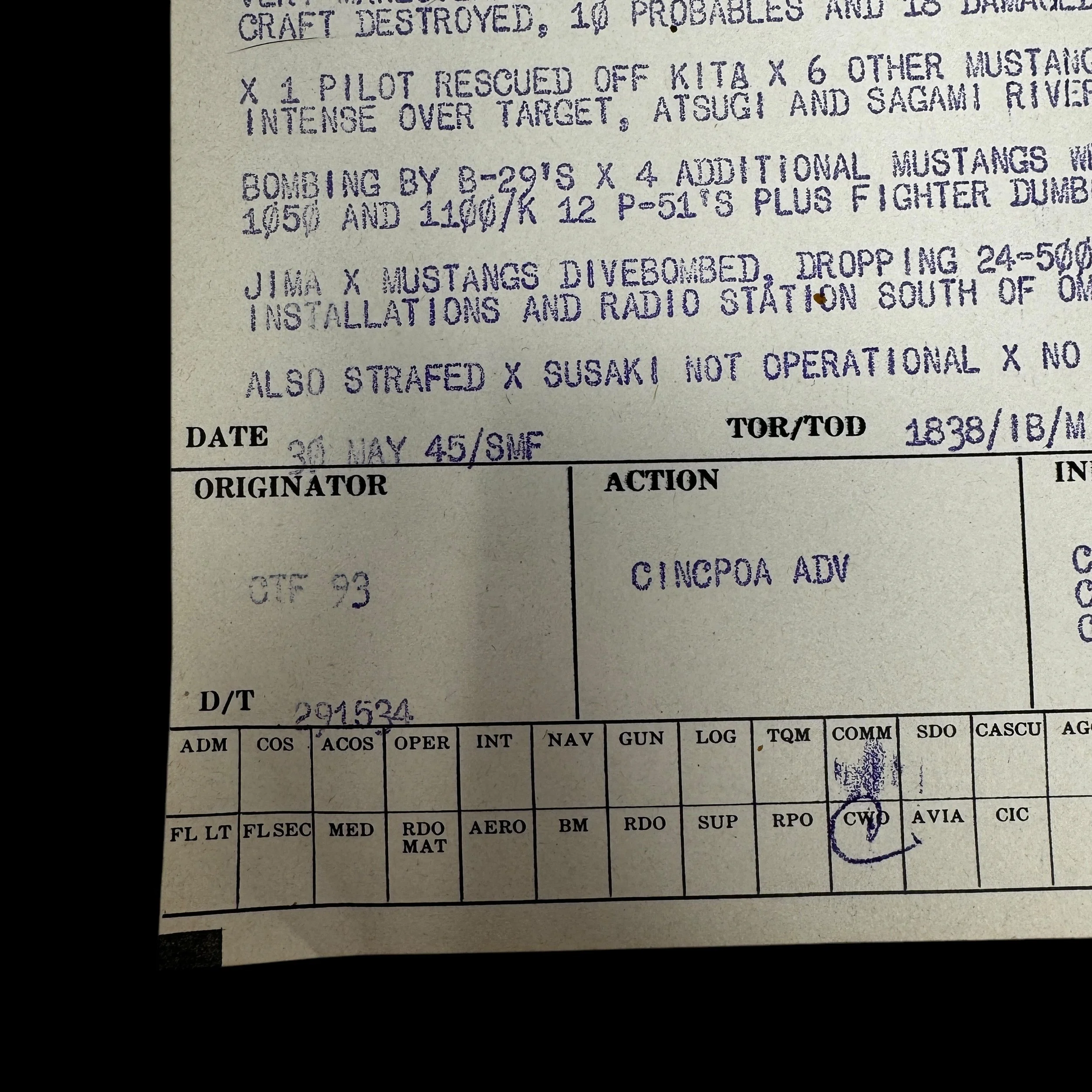
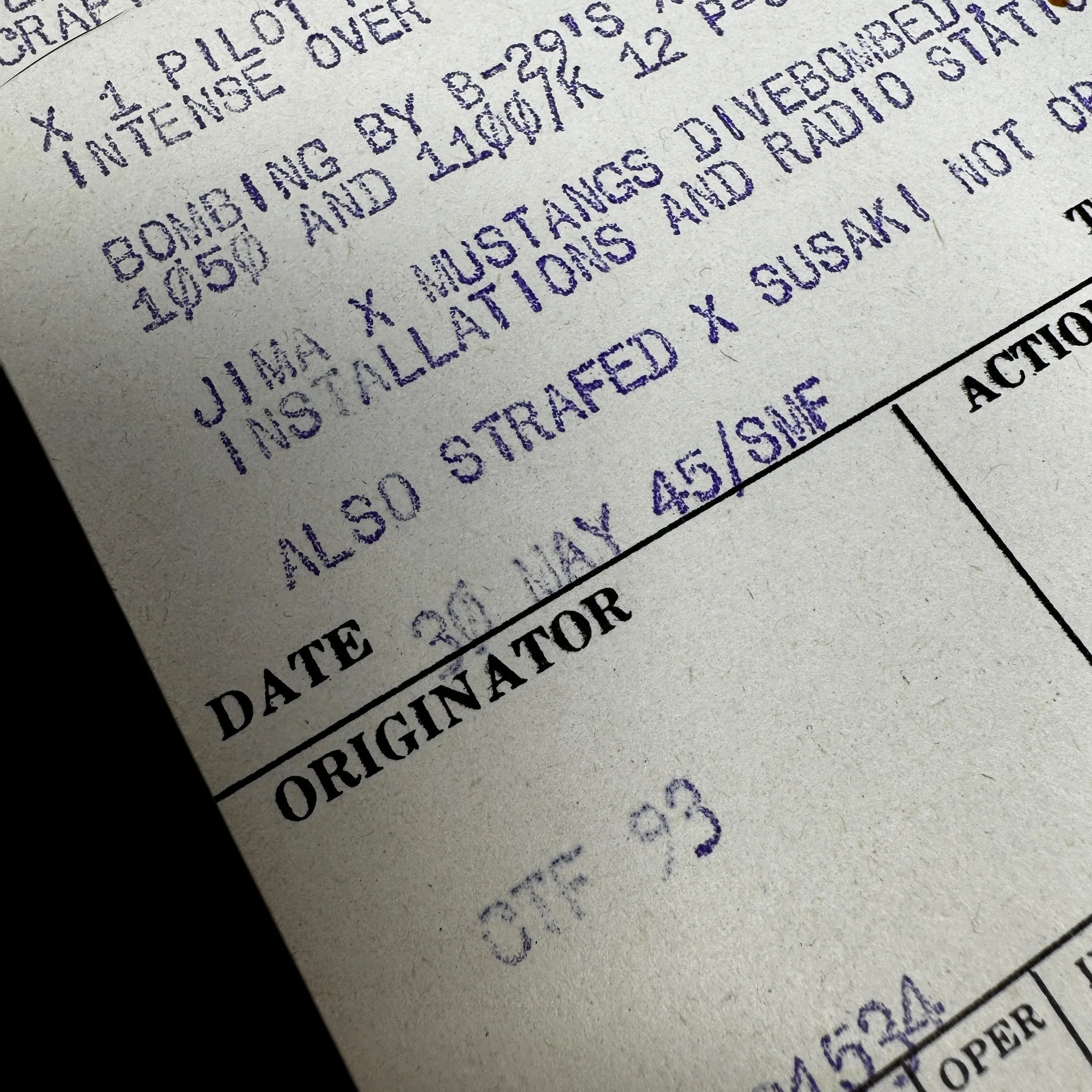
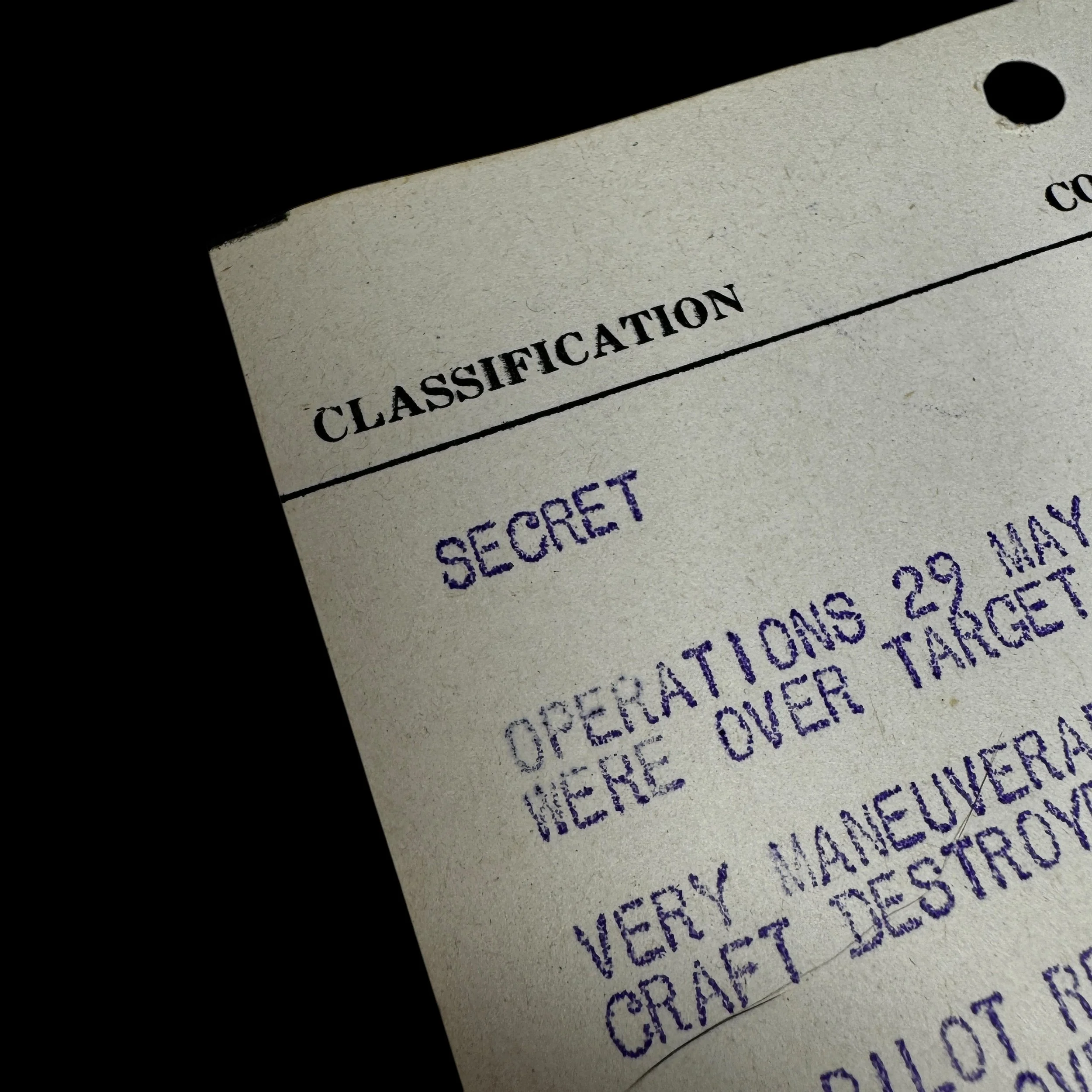
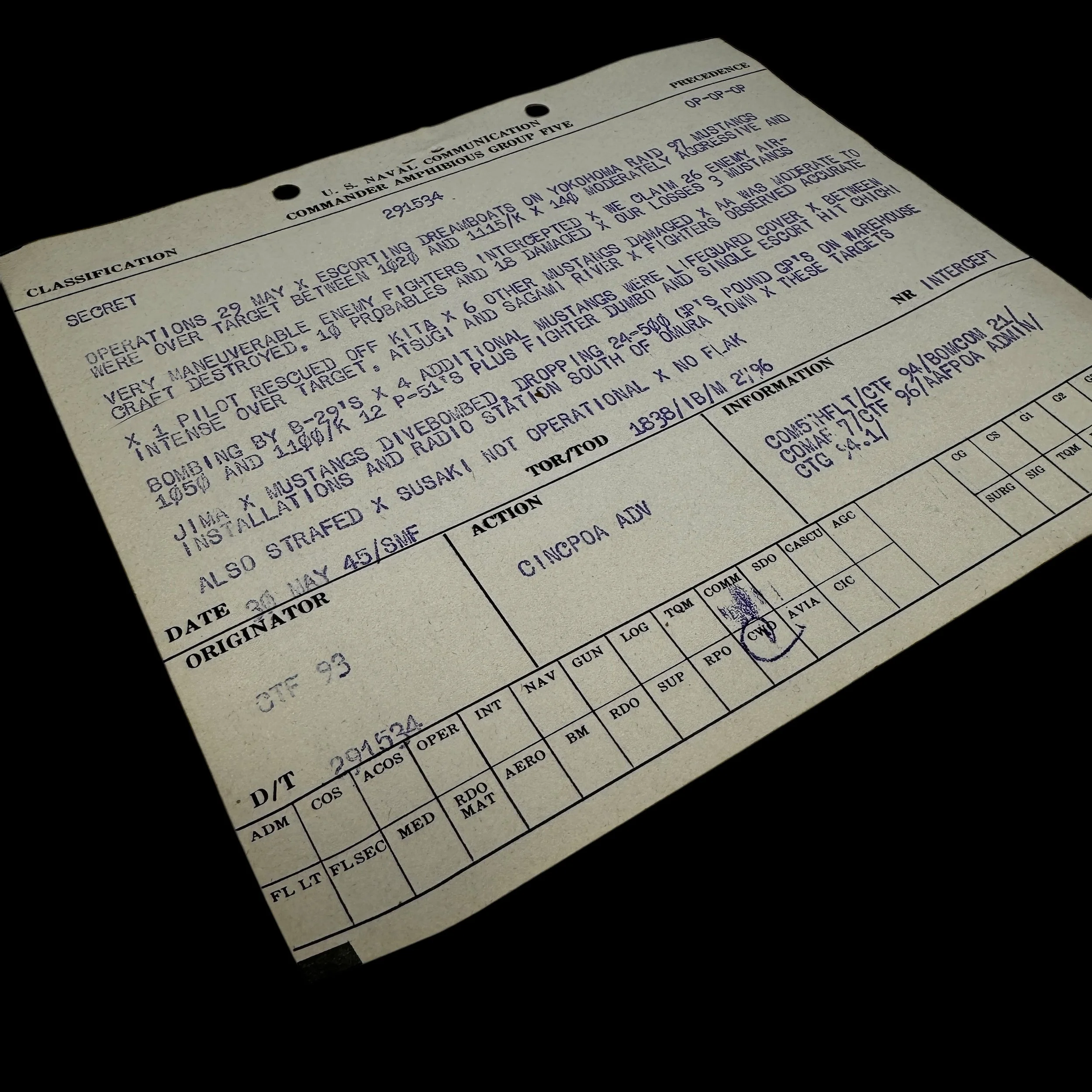
EXTREMELY RARE! WWII "SECRET" May 30th, 1945 "Great Yokohama Air Raid" B-29 & P-51 Raid Commander of Amphibious Group Five Admiral Jerauld Wright Combat Intelligence Report (1 Page)
Comes with C.O.A.
Dated May 30th, 1945, this secret World War II combat intelligence report is an exceptionally rare original WWII high-command document detailing the events of the May 29th, 1945, "Great Yokohama Air Raid." This devastating firebombing operation, carried out by B-29 Superfortresses, was one of the largest air raids on Japan, leaving much of Yokohama in ruins.
The secret-marked report provides an in-depth account of the mission, including the role of P-51 Mustang fighter aircraft that escorted the B-29s, engaging in aerial dogfights and executing targeted bombing runs on key enemy positions. It meticulously documents the extent of Japanese resistance, listing the number of enemy aircraft encountered, their engagement tactics, and the effectiveness of American air superiority.
According to the report, 26 enemy aircraft were confirmed destroyed, with an additional 10 marked as probable and another 18 aircraft sustaining damage. The mission also resulted in the loss of three P-51 Mustangs, but notably, one downed American pilot was successfully rescued.
The document further describes the intensity of enemy anti-aircraft fire, which ranged from moderate to intense over Yokohama. It also details smaller-scale P-51 dive-bombing missions, which targeted warehouse installations and radio stations with little to no flak resistance. These precision strikes were executed without interference, further crippling Japanese infrastructure in the region.
This secret wartime intelligence report provides an unparalleled firsthand perspective on the aerial combat, strategic objectives, and the immense destruction inflicted upon Yokohama just months before the end of World War II.
This extremely rare and museum-grade WWII artifact is a U.S. Naval Communication combat intelligence report for Rear Admiral Jerauld Wright - Commander of Amphibious Group Five (a newly created unit of the Amphibious Forces, U.S. Pacific Fleet, commanded by Vice Admiral Richmond Kelly Turner). Dated May 30th, 1945 this SECRET U.S. military intelligence report was produced on Rear Admiral Jerauld Wright's flagship USS Ancon (AGC-4). It provided the most updated and secret Pacific Theater intelligence to Rear Admiral Jerauld Wright during his command of the Task Group during the Invasion of the Ryukyu Islands - Battle of Okinawa - Operation Iceberg, This intelligence report provided Rear Admiral Jerauld Wright - Commander of Amphibious Group Five with intelligence of the Pacific Theater operations such as U.S. Marine advances, POW captures, MIA reports, Japanese strongholds, divisional movements, retreats, resistance pockets, airstrikes reports, etc. Rear Admiral Jerauld Wright was awarded a Bronze Star, with a combat "V" device, for his leadership as the commander of Task Group 51.2 during Operation Iceberg.
Amphibious Group Five:
In November 1944, Rear Admiral Wright took command of Amphibious Group Five, a newly created unit of the Amphibious Forces, U.S. Pacific Fleet, commanded by Vice Admiral Richmond Kelly Turner. Wright's group would be involved in the invasion of the Ryukyu Islands (Operation Iceberg), the island of Okinawa being the key objective. Once taken, U.S. forces would use Okinawa as a staging area for the eventual invasion of Japan, and a base for the B-29 Superfortress bombers of the U.S. Seventh Air Force to attack the Japanese home islands.[ Amphibious Group Five would transport the 2nd Marine Division, Major General Thomas E. Watson, USMC, commanding, with Wright flying his flag from USS Ancon (AGC-4).
For Operation Iceberg, Wright's force was designated Demonstration Group Charlie (Task Group 51.2), whose mission was to serve as a decoy force working in conjunction with the Southern Attack Force (Task Force 55) commanded by Rear Admiral John L. Hall while the Western Islands Group (Task Group 51.1) under Rear Admiral Ingolf N. Kiland and the 77th Infantry Division secured Kerama Retto and other offshore islands before landing at Ie Shima. Task Group 51.2 would subsequently serve as a floating reserve for the U.S. Tenth Army (Task Force 56), commanded by Lieutenant General Simon B. Buckner, USA, before returning to Saipan.
Wright was ordered to Pearl Harbor to begin planning the invasion of the Japanese home islands, which would begin with Operation Olympic, the invasion of the southern island of Kyūshū. Wright's Amphibious Group Five would be part of the 5th Amphibious Force, commanded by Vice Admiral Harry W. Hill, which would land the V Amphibious Corps (VAC) on the west coast in the Kaminokawa – Kushikino area. Amphibious Group Five would consist of four old battleships, ten cruisers, fourteen destroyers, and seventy-four support craft. However, Operation Olympic and the follow-up invasion of Honshū (Operation Coronet) were cancelled following the dropping of the atomic bombs on Hiroshima and Nagasaki. Rear Admiral Jerauld Wright was awarded a Bronze Star, with a combat "V" device, for his leadership as the commander of Task Group 51.2 during Operation Iceberg.